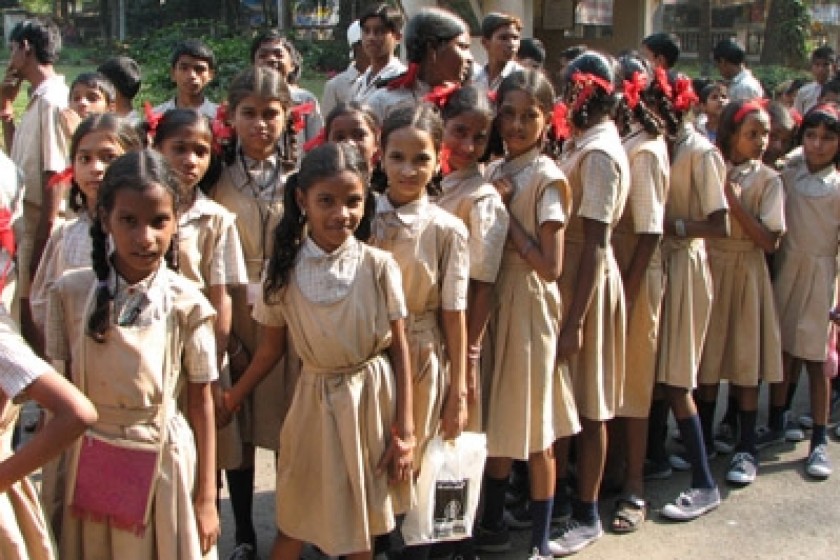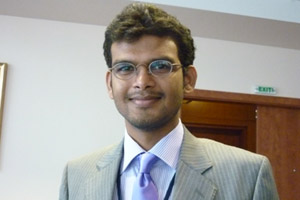
Undesirable Gender: Some Baby Girls in India Killed by Their Families When Born
The latest census report of India shows that there is a marked decrease in the sex ratio in the country: there are many male children being born with comparatively few females. In some places the gap in the ratio is so big that there are about only 780 female children per 1000 male children.
The reason for this statistic is that in some Indian villages girl children are being killed by their families as soon as they are born.
"I have a few friends that come from the state of Rajasthan which is a northwestern state in India which borders on Pakistan. In that state, there are villages which are famous for having not a single girl child at all and so there are only male children in villages. In Rajasthan there are numerous reports every year that the girl child as soon as she is born is killed," Dhruv Sanghavi, a Delhi-based advocate told "Hetq."
He explained that traditionally in India, especially in Hindu families, a girl child is viewed as a burden on the family and as somebody else's wealth in your house. Therefore families do not want to have a girl child.
Though the so called "bridal price" has been abolished by law many decades ago, this practice is still rather prevalent in India. When a girl is married, her family has to pay to the family of the bridegroom a big amount of money, or give him houses, cars and other expensive things as a gift so that the man marries her.
Dhruv Sanghavi says that another downside of the "bridal price" is that there a lots of cases of "bridal price debts." When the family of the bride cannot afford paying the price demanded by the bridegroom's family, the woman is "reminded" about it every time by her husband's family. Sometimes the torture inflicted by the husband and his family are both psychological and physical. Oftentimes, the wives are driven to commit suicide.
Though gender determination tests during pregnancy are banned in India by law, Dhruv Sanghavi says that rich families continue to take illegal gender determination tests. If the fetus is female, a forced or illegal abortion is often committed. As for Indian villages, where gender determination tests are not available generally, female infanticide is very prevalent.
 "These aren't unique cases. I do not think that when you have villages with only men and only boys, this can be called to be unique. Of course, if you look at the whole population of India, there are few cases that come to light. But these cases do show that these practices are still prevalent. Of course, they are not a majority. But the fact that it still happens in some rural areas as a matter of practice is shocking indeed," Dhruv Sanghavi said.
"These aren't unique cases. I do not think that when you have villages with only men and only boys, this can be called to be unique. Of course, if you look at the whole population of India, there are few cases that come to light. But these cases do show that these practices are still prevalent. Of course, they are not a majority. But the fact that it still happens in some rural areas as a matter of practice is shocking indeed," Dhruv Sanghavi said.
Some cases of female infanticide are being covered in the Indian press. When asked if there have been cases when the murderers are being brought to justice and punished, Dhruv Sanghavi answered that one of the problems with the Indian judicial system is that it's extremely slow and there are innumerable cases that have been pending for decades.
"But, yes, I think, whenever these cases come to light and whenever it is brought before the judicial system, they are brought to justice. Of course, there is lot of manipulation that can be done with the judicial system, as well, but most definitely our judiciary is strong and independent and does take action whenever possible," he added.
Due to the decrease in the sex ratio in India, young people face difficulties when marrying. One girl is essentially bought from another village and is married off to 4 or 5 men at the same time. It is forbidden by law for a woman to have several husbands in India. But the Indian advocate says that in reality laws do not always function in the country and the practice is different.
"There are all sorts of discrimination that the girl child faces, like, for example, a lot of my women friends had to learn how to cook at a very young age. The education is given secondary importance for girls because their primary aim is supposed to be traditionally to cook for the husband and to clean the house and things like that. I have noticed this not only amongst my friends but also in my own family which is a very progressive family," Dhruv Sanghavi said.
In 2002, the 86th amendment to the Indian Constitution made the right to free and compulsory primary education a fundamental one for both girls and boys between the ages of 6 and 14. The new breed of the Indian middle class which, in Dhruv Sanghavi's words, is different from that in Europe and US, want to educate their children. However, there are many instances of girls not being sent to school.
One of the reasons is that many Indian families continue to think: "Why should I spend my resources on educating her when her only job is to produce children and cook for her husband?"
The other reason is that children in India are viewed as economic assistance to the family. Thus, the family would rather have them work in the fields.
"There is a wide belief amongst the economically disadvantaged that the more children you have, the more money you can earn. Of course they can't see that there is also a responsibility that you owe towards the children and their childhood," the Indian advocate says.
The poorer the family, the lesser is the impetus for sending the girl child to school. According to official data, 37 percent of India's population of 1.2 billion lives in an abject poverty.
"However, that is not the only truth of India, as well. India is so diverse, that everything you say about India, the exact opposite is also true. Almost 40 percent of Indians are very-very poor, but also the 40 % of the top 10 richest people in the world are Indian," Dhruv Sanghavi said.
 Videos
Videos Photos
Photos




Comments (3)
Write a comment